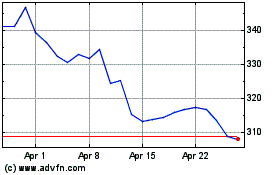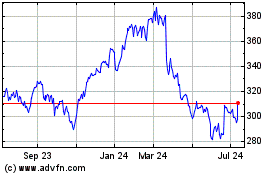Accenture Banking Technology Vision 2017 finds
that bankers believe AI will revolutionize the way banks gather
information and interact with customers
In the next stage of artificial intelligence adoption, banks
will use AI to help understand the intentions and emotions of
customers and enable better interactions, according to a new report
from Accenture (NYSE:ACN).
This Smart News Release features multimedia.
View the full release here:
http://www.businesswire.com/news/home/20170328005200/en/
Banking Tech Vision Infographic (Photo:
Business Wire)
The report, Accenture Banking Technology Vision 2017, draws on
the analysis of an advisory board of more than two dozen
individuals, interviews with technology luminaries and industry
experts, and results of a survey of more than 600 bankers.
According to the report, more than three-quarters (78 percent)
of bankers believe that AI will enable simpler user interfaces that
will help banks create a more human-like customer experience. In
addition, four out of five respondents (79 percent) believe
that AI will revolutionize the way banks gather information and
interact with customers, and three-quarters (76 percent) believe
that within three years, banks will deploy AI as their primary
method for interacting with customers.
“Consumers’ diverse needs and priorities are forcing financial
services firms to redefine how they interact with them to determine
the best products and services to meet individuals’ needs,” said
Alan McIntyre, a senior managing director at Accenture and head of
the company’s Banking practice. “AI-enabled tools can help banks
identify consumer preferences and empower their workforces to react
with insight and emotional intelligence, which is essential for the
development of meaningful consumer relationships. The challenge
will be how quickly banks can implement these new technologies,
many of which are not compatible with their existing IT
infrastructure.”
The theme of this year’s report, “Technology for People,” is a
call to action for bank executives to design technology to help
align their products and services with what consumers want in near
real-time. In traditional banks, basic transactions continue to
migrate from physical to digital channels, leading to major changes
as banks redesign their branch networks and enhance their digital
footprint. Four out of five bankers surveyed (80 percent) expect AI
to accelerate technology adoption throughout the organization,
providing their employees with the tools and resources to better
serve consumers.
When asked to identify the top three reasons for embedding AI
into user interfaces, respondents most often cited “to gain data
analysis and insights” (60 percent), “increase productivity” (59
percent) and “cost benefit savings” (54 percent). At the same time,
the bankers acknowledged challenges to implementing AI, citing
privacy issues (38 percent), compatibility issues with the current
IT structure (36 percent) and the fact that users often prefer
human interactions (33 percent).
As with previous Technology Vision reports, Technology Vision
2017 is structured around key trends informed by the research. The
five trends identified in Technology Vision 2017 are: “AI Is the
New UI (Experience Above All),” “Ecosystem Power Plays (Beyond
Platforms),” “Workforce Marketplace (Invent Your Future),” “Design
for Humans (Inspire New Behaviors)” and “The Unchartered (Invent
New Industries, Set New Standards).”
The “Design for Humans” trend indicates that the key to
increasing the quality of customer experience lies in the ability
to adapt for unique customer behaviors. The report finds that while
human contact is diminishing in terms of volume, the quality and
importance of human touch points will increase. For instance,
one-third (34 percent) of the bankers surveyed said they plan to
use a detailed understanding of human behavior to guide new
customer experiences. And while nearly nine in 10 bankers (89
percent) said they believe that their customers are satisfied with
their bank’s use of personalization, two-thirds (67 percent) claim
they struggle to understand their customers’ needs and goals.
“Bankers believe that participating in ecosystems will provide a
variety of benefits — including improved customer satisfaction,
increased speed and agility in developing solutions, and access to
new customers,” McIntyre said. “However, they will also need to
develop a strategy to protect their brand positioning and to deepen
their own relationships with customers. More than one-third of the
bankers we surveyed believe that participating in ecosystems will
also increase their exposure to cyber security threats.”
As reported in the “Ecosystem Power Plays” trend, banks are
increasingly integrating their core functions with digital
ecosystem platforms in an effort to manage more broad-based
consumer relationships. Nearly all bankers surveyed (98 percent)
said they believe that it is ‘somewhat’ or ‘very’ critical to adopt
a platform-based business model and engage in ecosystems with
digital partners, with one-quarter (25 percent) of respondents
saying that their organizations are already taking aggressive steps
to participate in ecosystems.
Many banks are already giving authorized third-parties access to
account data and aggregated card profiles to benefit customers.
Banks recognize that it is critical to participate in these
ecosystems, but it comes at a cost. Three-quarters (76 percent) of
respondents said that participating in these ecosystems would
require giving up control in favor of an overall better outcome —
such as speed, agility and access to new customers — and that same
number believe that chosen partners and ecosystems will help
determine their bank’s competitive advantage moving forward.
A full copy of the report can be accessed here.
Methodology
Accenture’s Technology Vision is developed annually by the
Accenture Labs. For the 2017 report, the research process included
gathering input from the Technology Vision External Advisory Board,
a group comprising more than two dozen experienced individuals from
the public and private sectors, academia, venture capital firms and
entrepreneurial companies. In addition, the Technology Vision team
conducted interviews with technology luminaries and industry
experts, as well as with nearly 100 Accenture business leaders.
In parallel, Accenture Research conducted a global online survey
of more than 5,400 business and IT executives across 31 countries
and 16 industries to capture insights into the adoption of emerging
technologies. The banking industry report is based on
responses from 579 respondents at banks in 31 countries across
North America, Europe, Asia-Pacific, Africa and South America. The
goal of the survey was to identify the key issues and priorities
for technology adoption and investment. Respondents were mostly
C-level executives and directors, with some functional and
line-of-business leads, at companies with annual revenues of at
least US$500 million, with the majority of companies having annual
revenues greater than US$6 billion.
About Accenture
Accenture is a leading global professional services company,
providing a broad range of services and solutions in strategy,
consulting, digital, technology and operations. Combining unmatched
experience and specialized skills across more than 40 industries
and all business functions – underpinned by the world’s largest
delivery network – Accenture works at the intersection of business
and technology to help clients improve their performance and create
sustainable value for their stakeholders. With approximately
401,000 people serving clients in more than 120 countries,
Accenture drives innovation to improve the way the world works and
lives. Visit us at www.accenture.com.
View source
version on businesswire.com: http://www.businesswire.com/news/home/20170328005200/en/
AccentureMelissa Volin, + 1
267-216-1815melissa.volin@accenture.com
Accenture (NYSE:ACN)
Historical Stock Chart
From Mar 2024 to Apr 2024

Accenture (NYSE:ACN)
Historical Stock Chart
From Apr 2023 to Apr 2024
